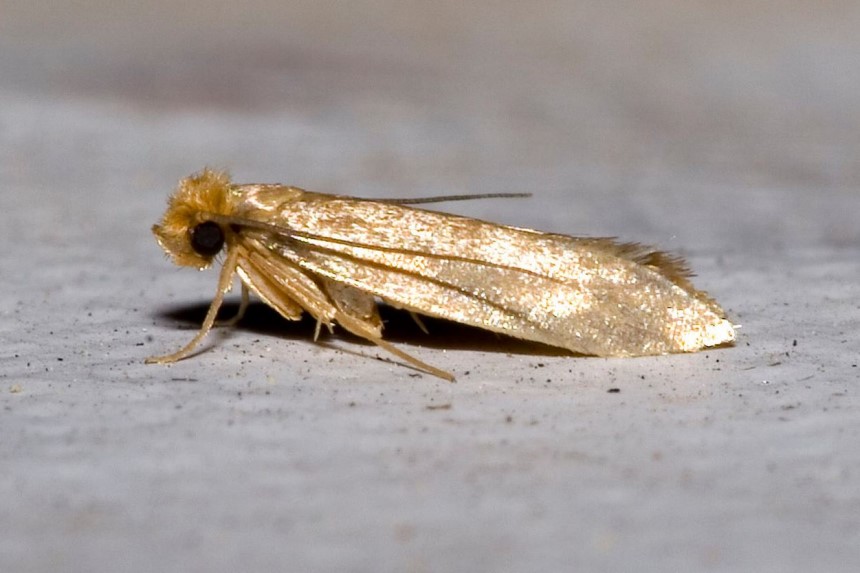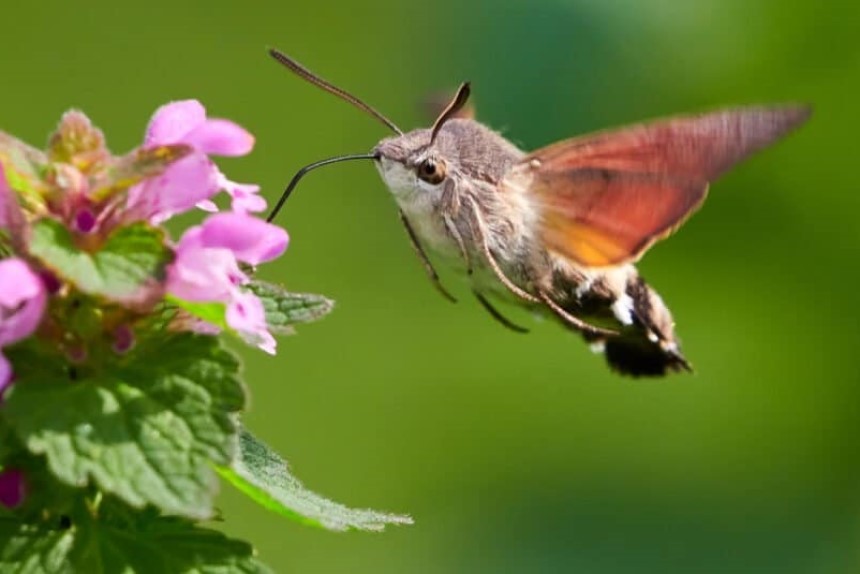

You may have seen a moth in your closet and asked yourself what a brown furry butterfly is doing in between your clothes. Although moths are related to butterflies, they have different characteristics and lifespans. And, what do moths eat? There isn’t an elaborate answer to this question as there are 160,000 species. The insects eat many different things, including leaves, flowers, grains, fruit, and animal products like fur and beeswax. Some carnivorous species eat aphids and soft-bodied insects.
Most adult moths only feed on liquids like flower nectar and tree sap for energy and hydration. Household pests like pantry and clothes moths feed on dry stored foods and fabric. If unnoticed, pantry and clothes moths can cause real damage in your wardrobe or pantry. This article has everything you need to know about moths’ diet and how you can get rid of them.
Many people assume that the adult moths they find inside their closets are responsible for the holes in their sweaters. Moths have different diets at every stage of their life cycle.
Before a larva emerges from a hatched egg, it feeds on the nutrients in the eggs. Most female moths lay eggs in ideal spots with the food the larvae will feed on when the eggs hatch.
Moth larvae do most of the feeding and destruction in the environment they are born in. For most species, all the nutrients that a moth needs from when they hatch to when they mature into adults are consumed in the larval stage. The average lifespan of a moth larva is 3 months.
If you have a clothes moth infestation, they will feast on your clothes, blankets, and carpets for three good months. However, moths’ development is affected by the availability of food and environmental conditions.
If the weather is too cold, moth larvae can live up to 30 months just feeding before spinning a cocoon. In the pupa stage, moths undergo molting five times before morphing into adults. According to an academic research paper by Duke Today Trusted Source Low Oxygen Triggers Moth Molt | Duke Today A new explanation for one of nature’s most mysterious processes, the transformation of caterpillars into moths or butterflies, might best be described as breathless. today.duke.edu , moths remain dormant and do not feed in the pupal stage. They rely on the food they consumed in the larval stage for energy and growth until they undergo histolysis. Science Direct defines histolysis as the degeneration of larval muscles in insects during metamorphosis to form adult-specific muscles.
Most adult moths barely eat. Some species, like the gypsy moth don’t even have a mouth for feeding. According to an article by Connecticut’s Department of energy and environmental protection Trusted Source The Spongy Moth: Life Cycle and Related Moths Learn about the life cycle of the spongy moth and other moths. portal.ct.gov , the gypsy adult moths live for only two weeks, and their sole purpose is to reproduce. Some species have mouths but can only feed on liquids like flower nectar, rotten fruit, or tree sap for hydration and energy during the mating and reproducing period.
Moth diets are highly varied. Different species eat different things. Here are some of the most common moths you are likely to encounter in your home and their food preferences;
Webbing and case-making moths: These prefer the fibers found in textiles and are attracted by silk, wool, cashmere, and lint. You will find these moths among your clothes, curtains, carpet, and upholstery.
The moths include clothes and carpet moths. Clothes moths feed on keratin, which New World Encyclopedia Trusted Source Keratin - New World Encyclopedia Keratin is any one of the family of tough and insoluble fibrous structural proteins that form the chief, hard, nonmineralized structural component of hair, wool, horns, nails, claws, hooves, and other vertebrate tissues, as well as part of various invertebrate structures. Keratins are rivaled as biological materials in toughness only by chitin. www.newworldencyclopedia.org defines as an insoluble fibrous structural protein. Fabrics that contain keratin include; fur, cashmere, wool, alpaca, and angora, among others. Interestingly, clothes moths can go for keratin in leather, feathers, or hair bound up in the dirt beneath your bed if there are no clothes with natural fibers around.
Cotton and synthetic fibers are safe from moth larvae because they lack keratin. However, case-making moths use cotton fibers for their cocoons sometimes, meaning your cotton garments are not entirely safe from moths.


To protect your kitchen from pantry moths, check out Dr. Killigan’s Premium Pantry Moth Traps, which turned out to be non-toxic and highly effective.
Wild moth species eat many different things. Most moth species eat leaves and flowers. Others eat seeds, fruit, or animal products like beeswax and fur. Some carnivorous species feed on aphids and soft-bodied insects. Other things that moth eat include;
As mentioned before, for most species, only the larvae can feed. Most adult moths exist for reproduction only. They do not even have mouths for feeding.
Moth larvae need food to grow. If they can’t find their preferred food where they are born, they will feed on anything. Moth pupae can go for months without food, especially if the surrounding conditions are not favorable for growing into adults. Adult moths don’t need a lot of food. Species that have mouths only feed on liquids for energy and hydration just until they are done mating and reproducing.
Moth larvae have strong mandibles which they use to nibble on leaves, fabrics, and other food options. Moth larvae eat a lot, hence the strong mandibles.
Adult moths have proboscis, which is a long appendage that comes from their heads. The proboscis is like a long straw that the moths use to suck liquid from plants and other food sources. Most adult moths that can feed live on a liquid diet, hence the proboscis.
 Tips on Getting Rid of Moths
Tips on Getting Rid of MothsPest moths can wreak havoc in your home, especially if you buy expensive cashmere sweaters or always keep your pantry full. Do not fret if you realize you have an infestation as there are myriad ways of getting rid of the insects;
If you have a wild moth in the house, it has no business staying in your house and is probably desperate to leave. Open the windows or door and nudge it out.
Call a pest control expert if you don’t feel you can handle the situation yourself. A pest control professional will exterminate the infestation correctly and help you put up preventive measures against a future infestation.
Do you have a pantry moth problem and can’t seem to find an effective solution? Consider getting the highly acclaimed Terro T2950 Closet & Pantry Moth Trap. The trap is easy to use, and it offers perimeter defense against closet and pantry moth species.
A moth infestation may not sound scary until you find holes in your posh cashmere sweater or you see flying insects in your wheat flour container. Knowing a moth’s lifestyle and diet makes getting rid of an infestation much easier. So, what do moths eat? Different moth species eat different things. The household pests you are likely to encounter are clothes moths, carpet moths, and pantry moths that eat fabric and dry food items.
After getting rid of moths, be sure to seal all the openings they could have come through. Close your windows at night and use essential oils to repel moths. Regular cleaning will keep you vigilant of an infestation. Remember, a pest control expert is the easiest solution to getting rid of any kind of pest infestation.